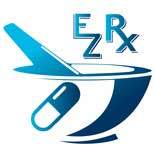- Posted On: April 15, 2020
- By: admin
- Share:
My Insurance Company Doesn’t Cover My Medication Anymore, What Should I Do?
Medications are often dropped by the insurance plans from the drug list or formulary, as they call it, if they are seldom prescribed, or if there are more affordable and generic options available.
Formulary tiers decide how much you will have to pay as copayment or coinsurance for your medications. Vertical integration developed among the pharmacy benefit managers and insurance companies over the years ensures that specialty, expensive and lifesaving medications remain in the high tier, and you may have to bear high costs in copays or coinsurances for these non-preferred formulary medications. Tier 1 generally has generics with lowest copays, while Tier 4 to 6 have drugs with the highest copays and coinsurances. In case the medication is left out of coverage, you will have to bear its full cost yourself.
Approximately 150 to 200 drugs remain non-covered from various formulary plans on an average. Non-FDA approved products, weight loss, weight gain and fertility medications, cosmetics, vitamins and mineral products, bulk chemicals and non-prescription medications are often not covered.
It’s bad enough discovering that the medication prescribed for you by your doctor is not covered by your plan. In case your insurance doesn’t cover your medication, the following tips may help you with prescription medications savings and affording medications for your treatment.
If you notice that your doctor has prescribed you an out-of-coverage or an expensive medication, ask about other covered alternatives or generics that will be more affordable to you. If your doctor can’t find a good alternative, you can still save on prescriptions by filling a 90-day prescription instead of 30-day that will be cheaper, or getting a higher dose pill and then cut it into half, because a higher dose medication is usually priced low then getting multiple pills of lesser strength. Ask your doctor if it is an option, because some medications may deteriorate when left exposed to the environment.
State and federal governments offer patient assistance programs to certain eligible individuals to reduce their out-of-pocket costs to as little as $0 per month. These are generally offered to uninsured, while manufacturer copay programs are generally offered with insurance.
You can speak with your plan provider about making a formulary exception and provide coverage to your medication. For this, your physician may be asked to provide supporting documents. Some plans may require you to undergo a “step therapy” with less expensive medication before your request for the expensive drug coverage is approved. Your insurer may provide you access to the medication while you are in the exception process. You can follow the drug exception process, for which your doctor has to confirm in writing to the insurance company that the medication is necessary for the treatment of your medical condition and other covered drugs won’t be effective for you or will cause harmful side effects on you.
If your request for exception is rejected by your plan provider, you can work with your doctor to submit an application for appeal and convince your health plan to pay for the medication. You also have the right to have the exception denial reviewed by an independent third party. Urgent care denial appeal is usually decided within 3 days while non-urgent care denial appeals can take up to 30 days to be settled.
If you can’t get through the formulary exception, you can consider switching to a different plan that covers the medications you need.
Shop around for healthcare plans during the open enrollment period. You may find a better plan that covers medications you often need.
You can apply for the SaveonMeds drug card which is designed to help the patients save on medications who pay in cash. It’s available to you whether you have health insurance or not.
With SaveonMeds drug card, you won’t have to shoulder the full price of your non-covered and expensive medications as the card allows you to save up to 35% on brand name medications and up to 85% on generic medications.
People of all ages, regardless of their income or coverage, can use SaveonMeds drug discount card to save on prescriptions at over 65,000 network pharmacies throughout the USA, including brand chains such as Walgreens, Target, Winn Dixie, CVS and Publix.
It’s quite easy to use the SaveonMeds discount drug card for making savings on prescriptions. Just download your SaveonMeds medications savings card for FREE from www.savingsonmeds.com, or get your FREE digital drug saving card by texting the keyword “SAVEONMEDS” to phone number 21000. You can choose a local pharmacy to fill your prescription, show your drug discount card, and pay only the discounted price. The card can be used immediately after you download it as it comes activated with lifetime validity.
For the best price, check drug prices at www.savingsonmeds.com as cash price for medications differs from one drug store to another, and choose a local pharmacy providing the medication at the lowest price. You should be able to save up to 85% on some medications.
Save on medication costs with insurance with SaveonMeds drug savings card as it works independently of insurance and can be used for savings on prescription drugs even if you have health insurance. You can use it as Albuterol discount card, flu discount card, Adipex savings card, Benzonatate saving card also. You can also share your SaveonMeds prescription medication discount card with family, friends and coworkers to help them save on prescription medications. The card will help you and other users in affording the costs of non-covered medications and the ones that come with high deductibles and copays with your health insurance plan.
Disclaimer: The information and content posted on this website is intended for informational purposes only and is not intended to be used as a replacement for medical advice. Always seek medical advice from a medical professional for diagnosis or treatment, including before embarking on and/or changing any prescription medication or for specific medical advice related to your medical history.
Click here to download your card



